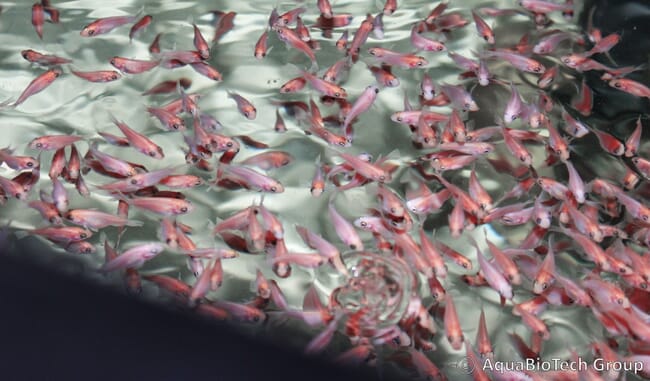The event – organised by the Global Aquaculture Alliance (GAA) included industry members from The Fishin’ Company and GAA – delved into the economics of tilapia aquaculture and contextualised the ongoing trade war between China and the United States.

The trouble with tariffs – an American perspective
In the spring of 2018, President Trump enacted a series of tariffs to counteract the trade deficit between the United States and China. Though the move wasn’t targeting the tilapia industry specifically, the 25 percent tariffs on all Chinese imports, which were followed by retaliatory measures enacted by the Chinese government, have influenced the buying decisions of consumers, as well as having a noticeable impact on importer purchasing.
According to Matt Brooker at The Fishin’ Company, one of the key stakeholders at the GAA roundtable, Chinese tilapia producers increased output in the latter half of 2018. During this surge in production, American tilapia importers began stockpiling. Though stockpiling delayed the impact of the 25 percent tariffs, cold storage supplies were soon depleted. As of July 2019, American tilapia importers aren’t building up their inventory, and wholesale purchasing of tilapia has decreased.
Brooker concluded that the future of the market was unknown. Conventional economic wisdom dictates that when supplies of a product are restricted, the demand and price will increase to reflect the change in the market. However, given tilapia’s sensitivity to price and flat demand, any price increase could dissuade consumers from buying the product. This would make the future of the American industry more uncertain.
The Chinese perspective
The trade war has compounded problems facing the already contracting tilapia market in China. Before the tariffs were enacted, output had decreased by 40 percent from a high point in 2016, and exports to the US had dropped as well. These drops in production and export occurred while demand for tilapia was decreasing. Introducing tariffs further accelerated the slump in demand, production and export of tilapia.

According to Steve Hart, GAA’s Vice President in Asian market development, many producers want to alleviate these pressures by diversifying their production. However, the uncertainty introduced by the tariffs has meant that long-term planning is difficult. Hart also reported that it is becoming more expensive to process tilapia in China, further hindering the commodity’s rebound.
Strategic thinking
Hart and Brooker agreed that the global sector faced a challenging future. However, both proposed steps to shore up tilapia’s position in the marketplace in the short-term. Since production and export of the product is declining, Hart and Brooker suggested that the industry should take steps to increase consumer demand.
Brooker felt that educating consumers about tilapia production could bolster demand. Education would make the wider public more familiar with the species and counteract some of the negative perceptions of tilapia farming.
He also suggested that the industry use scientific papers on tilapia aquaculture as a marketing tool. Studies that emphasise the sustainability and nutritional value of tilapia could generate good publicity and positively impact demand, he argued.
In a similar vein, Hart suggested that the sector embrace certification on tilapia products. Embracing certification from the GAA or BAP would ensure that products maintained specific quality standards and would meet consumer expectations.
When thinking of the long-term viability of the sector, Brooker recommended that the tilapia sector establish a pre-competitive body that would protect the interests of producers and exporters. In his view, the group could be either NGO or industry-led, and roughly follow the GAA’s approach to the shrimp sector. Having a unified body that represented the industry would allow them to negotiate with regulators, establish quality controls and lobby against damaging tariffs.
Background
As those taking part in the summit explained, the tilapia sector has grown massively in the past 20 years. According to the latest estimates from the FAO, more than 140 countries farm tilapia and global production has increased six-fold since 1990, reaching over 6.5 million tonnes in 2015. China remains the largest producer, consumer and exporter of the product.
Over time, they noted, the steady increase in production was met with consistent increases in demand from consumers until 2017. However, from 2017 onwards, demand for and production of tilapia started to decline in both Western and Chinese markets.
Tilapia occupies a unique place in the market – it’s inexpensive and has a high protein content. Its mild flavour also means that it has multiple culinary uses. Though these factors contribute to tilapia’s success, the product remains highly sensitive to price fluctuations and consumer perception. If any of these elements change, those at the roundtable warned, tilapia’s foothold in the global marketplace could diminish.




